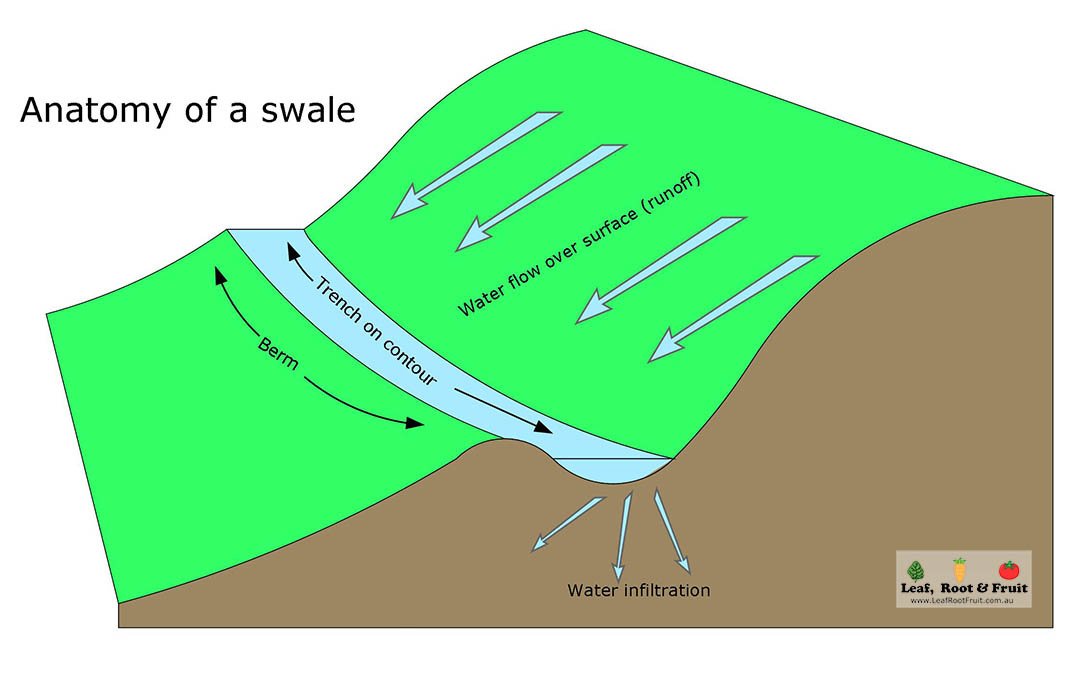If you’ve read a bit about permaculture, you’re likely to have come across the concept of swales. Like herb spirals, they’re iconic, and they’re often included in permaculture designs by people who have just completed a permaculture design certificate (PDC).
Herb spiral – check
Compost bay – check
Zealous use of comfrey – check
Pizza oven – check
Swales everywhere and anywhere – check
Bill Mollison expands on swales in his book Introduction to Permaculture (which incidentally is a great guide to many practical aspects of permaculture design, including wind breaks, water use and creating microclimates). Geoff Lawton and many other permaculture educators are huge advocate of swales. But I’m not a huge fan of them, not in my part of the world.
What is a swale anyway?
A swale is essentially a ditch, dug on a contour. It is designed to reduce water run-off and increase infiltration into the soil. As water runs down a slope, it hits the swale, which fills with the water. Because the water is not directed anywhere (as with a ditch that directs water to flow downhill), it is held in position. There are only two ways for the water to leave the swale: by evaporating or by soaking into the soil.
Swales are used in low rainfall areas to ensure that no rainfall is wasted. They can also be used to create defined areas of high soil moisture and low soil moisture on a property, which provide options for planting trees and shrubs with different irrigation requirements. I can see the benefit of their use in some areas. But I also see them cause a lot of problems.




